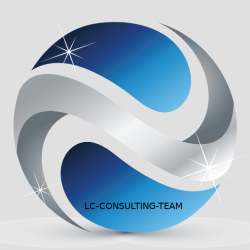Online Course: Cloud Computing
- Unit 1: Introduction to Cloud Computing
- Overview: This unit provides an introduction to cloud computing, covering the definition of cloud computing, its benefits, service models (IaaS, PaaS, SaaS), and deployment models (public, private, hybrid, community). Students will gain an understanding of the fundamental concepts and the role of cloud computing in modern IT infrastructures.
- Unit 2: Virtualization Technologies
- Overview: Students will learn about virtualization technologies, including hypervisors, virtual machines, and containers. The unit covers the principles of virtualization and its role in enabling cloud computing services and resource optimization.
- Unit 3: Cloud Service Providers
- Overview: This unit focuses on major cloud service providers such as Amazon Web Services (AWS), Microsoft Azure, and Google Cloud Platform (GCP). Students will explore the services offered by each provider, their unique features, and the process of selecting the right provider for specific use cases.
- Unit 4: Cloud Storage and Databases
- Overview: Students will gain an understanding of cloud storage services and databases, including object storage, block storage, and relational and NoSQL databases. The unit covers the management of data in the cloud and the selection of appropriate storage solutions.
- Unit 5: Networking in the Cloud
- Overview: This unit delves into networking concepts in the cloud, including virtual networks, subnets, load balancers, and content delivery networks (CDN). Students will learn about the design and management of cloud-based network infrastructures.
- Unit 6: Security and Compliance in the Cloud
- Overview: The unit covers cloud security best practices, identity and access management (IAM), encryption, and compliance frameworks. Students will explore the shared responsibility model and the measures to ensure data protection and regulatory compliance in the cloud.
- Unit 7: Cloud Migration Strategies
- Overview: Students will learn about cloud migration strategies, including rehosting, re-platforming, refactoring, and the challenges of migrating existing applications to the cloud. The unit covers the assessment and planning phases of cloud migration projects.
- Unit 8: Serverless Computing and Containers
- Overview: This unit focuses on serverless computing, containerization, and microservices architectures. Students will explore the benefits of serverless and container-based deployments and the management of containerized applications in the cloud.
- Unit 9: DevOps and Continuous Integration/Continuous Deployment (CI/CD)
- Overview: Students will gain an understanding of DevOps practices, CI/CD pipelines, and the automation of software delivery in the cloud. The unit covers the integration of development and operations teams and the tools used for continuous integration and deployment.
- Unit 10: Big Data and Analytics in the Cloud
- Overview: The final unit covers big data and analytics services in the cloud, including data lakes, data warehousing, and machine learning. Students will explore the use of cloud-based analytics tools and the management of large-scale data processing workloads.
This structure provides a comprehensive overview of the essential concepts and skills in cloud computing, covering a wide range of topics from foundational principles to advanced cloud technologies and best practices. Each unit’s content overview is designed to build a strong knowledge base and prepare students for practical applications in the field.


